‘Symbol of bonded kinship’: Singaporeans, Malaysians laud importance of Causeway as motorway celebrates 100 years
In spite of the perennial congestion issues and more alternative travel options on the cards, frequent travellers told CNA the Johor-Singapore Causeway is likely to continue to be a popular choice over the next decades.
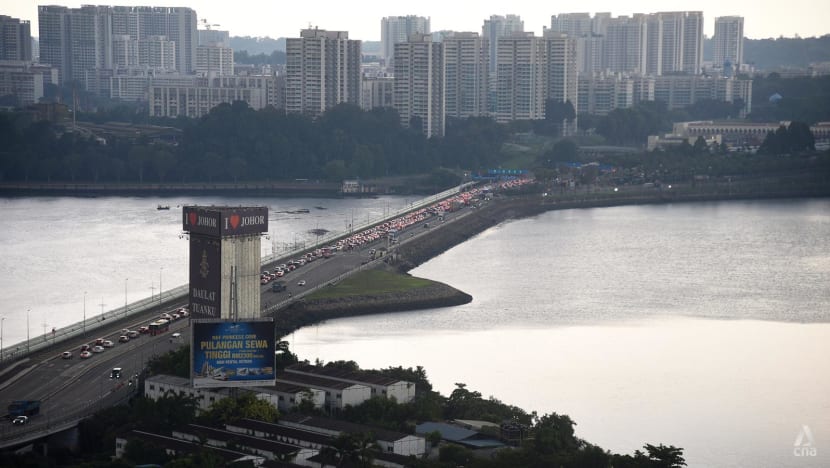
File photo of the Johor-Singapore Causeway taken from Johor Bahru. (Photo: CNA/Ahmad Zamzahuri Abas)

This audio is generated by an AI tool.
JOHOR BAHRU/SINGAPORE: The Johor-Singapore Causeway has been a big part of Mdm Samsiah Isnin’s life.
The 73-year-old Singaporean lives in a Housing and Development Board (HDB) flat at Marsiling Lane and her block faces the 1.05 kilometre-long bridge which connects Singapore and Johor Bahru.
“The Causeway is always crowded, morning or night. People going to work, or travelling for leisure … the bridge never sleeps,” said Mdm Samsiah.
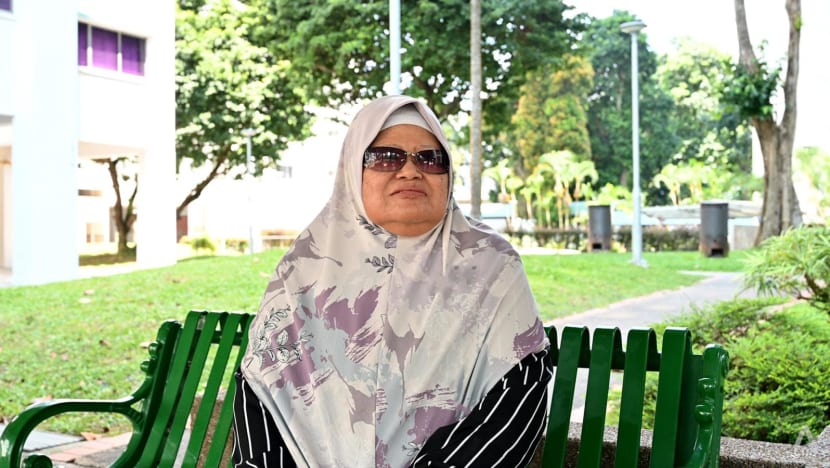
Besides the Causeway being a key physical landmark close to where she lives, it also serves as a connector for her to be close with her family on the other side of the border.
The housewife travels across the Causeway frequently with her husband to visit her siblings who live in Batu Pahat, a town in southern Johor located about a two-hour drive away from the land checkpoint.
“We will go and see them twice or thrice a month. We go often because my siblings are there, and when we meet them we are happy. We chat, have meals together and stay overnight at their place … Travelling across the Causeway allows us to enjoy this.
“I’ve been using the Causeway from when I was 19 years old until I’m 73 today. The Causeway (in essence) has not changed much, it is always jammed and the fact that it's crowded shows how important it is to all of us - Singaporeans and Malaysians,” said Mdm Samsiah.
She will be moving soon to Choa Chu Kang after the Singapore authorities acquired blocks in her neighbourhood as part of plans to redevelop and extend the existing Woodlands Checkpoint.
On Friday (Jun 28), the Causeway celebrates its centennial anniversary, having served as a connector across the Johor Straits for 100 years.
Today it has become one of busiest land crossings in the world, with an estimated 300,000 commuters passing through daily. And this figure is expected to grow with Singapore’s Immigration and Checkpoints Authority projecting traffic volume at the Causeway to increase by 40 per cent by 2050.
Frequent commuters, like Mdm Samsiah, have paid tribute to how the Causeway has played a pivotal role in their lives.
Additionally, in spite of congestion issues and plans to offer travellers more alternative modes of travel, many believe that the Causeway will continue to be relevant for commuters on both sides of the border.
Causeway’s centennial anniversary marked with exchange of gifts
An event was held at the Causeway on Friday (Jun 28) morning to commemorate 100 years of the bridge’s existence.
Key officials present included Johor regent Tunku Ismail Sultan Ibrahim, Singapore Minister for Foreign Affairs Vivian Balakrishnan as well as Johor chief minister Onn Hafiz Ghazi.
Dr Balakrishnan and Mr Onn Hafiz exchanged gifts - framed mementos of the Causeway.
The two leaders also oversaw the release of pigeons, which signifies peaceful relations between Singapore and Malaysia.
Officials from both countries then posed for pictures in the middle point of the 1.05km Causeway, which marks the international border between Singapore and Malaysia.
Traffic at the Causeway was paused for short periods during the event to allow for officials to arrive and depart, with the event lasting less than 15 minutes.
IMPORTANCE TO BOTH SINGAPORE AND MALAYSIA
The Causeway was constructed in 1924 as train and ferry services fell under increasing pressure with the rapidly growing movement of people and goods across the Johor Straits.
At the time, Singapore was a major international trading British port while Malaysia was a major producer and exporter of raw materials such as tin, rubber and gambier. The Causeway would serve as a means to transport these goods efficiently.

The land bridge has also seen through key junctures of history - from when it was bombed by retreating British forces during World War II, when immigration facilities were introduced in 1967 following Singapore’s separation from Malaysia as well as during the COVID-19 pandemic when the bridge was shut from leisure travel due to enforced border closures on both sides.
Singapore’s Consul-General in Johor Bahru Ng Kuan Khai said in a recent interview with CNA that the Causeway symbolises the close bilateral ties between the Republic and Malaysia as well as the ups and downs both countries went through together.
“For Singapore, Malaysia is one of the most important bilateral accounts, if not the most important bilateral account. We have a relationship that's quite unlike any other. It is bound by geography and a shared history.
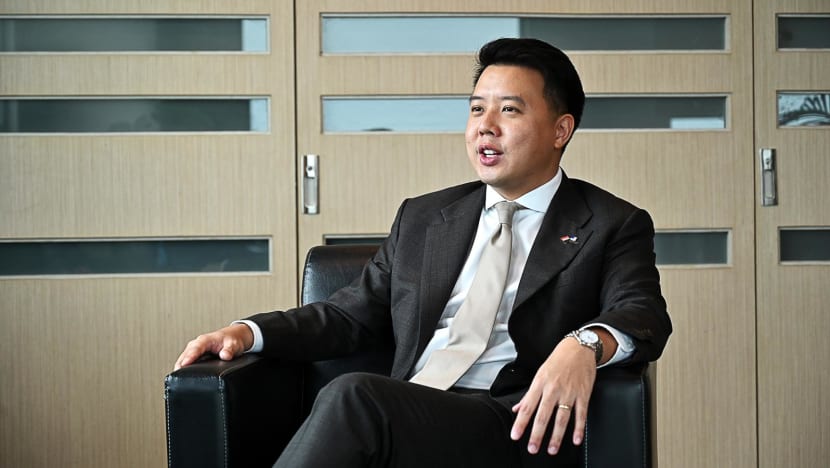
“We came together for merger for a period in our history and subsequently went our separate ways. But even after separation, we continue to deepen business and economic linkages between both sides and our peoples continue to maintain the close familial as well as cultural ties,” said the Singapore Ministry of Foreign Affairs official.
“So in that sense, the Causeway is a symbol as well as manifestation of our bonded kinship. It pre-dates our independence and the establishment of bilateral relations. And it is something that has seen our countries through good times as well as difficult times,” he added.
This sentiment is shared by people who have worked at the Causeway, including retired Malaysian immigration officer Ismail Adnan.
The 74-year-old, who served as an officer in charge of clearing travellers through immigration checks between 1974 and 1986, told CNA that the crossing is important to “bilateral cooperation” between both countries.
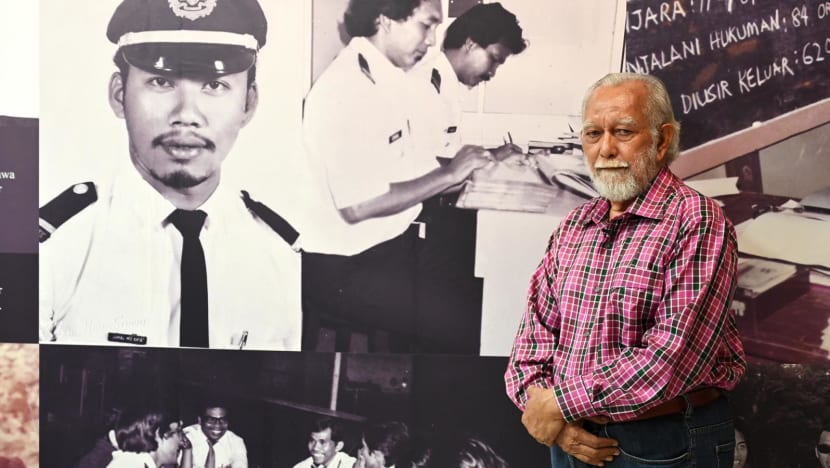
He also said that how far the immigration processes have evolved over the years for both Singapore and Malaysian authorities is reflective of how far technology has progressed with the times.
“I remember when I was on duty, we had to check passports of incoming travellers against two thick books: One (that) lists those who are refused all (immigration) facilities while the other had a list of blacklisted immigrants,” said Mr Ismail.
“Now it's more advanced, the scanning system is computerised and it's simpler and easier for officers. It's convenient for travellers from both Malaysia and Singapore which means you don’t waste your time waiting,” he added.
Mr Ismail reflected that through his interactions with travellers from Singapore at the Causeway, he felt that there was a mutual respect and understanding between citizens of both countries.
“We respect them and they respect us, they were cooperative and very pleasant to chat with,” he said.
“I believe in karma, if you are a good officer and you are polite, people will respect you too, what goes around comes around.”
A PIVOTAL BRIDGE FOR WORKERS, LEISURE TRAVELLERS
In recent decades, the high volume of traffic at the Causeway may also be attributed to the hundreds of thousands of Malaysians who commute daily for work in Singapore and home in Johor Bahru.
The increasingly strong Singapore dollar vis a vis the Malaysian Ringgit over the years have prompted more Malaysians to head across the Johor Straits for work and earn a better living.
Among them is Mr Mohamad Radzi Zolkifli, a technical officer with SMRT who commutes daily across the Causeway via motorcycle between his home in Permas Jaya and his office in Tai Seng.
He told CNA that it takes him around two hours to travel each way during peak hour, which means on most days he spends four hours in total stuck in transit.
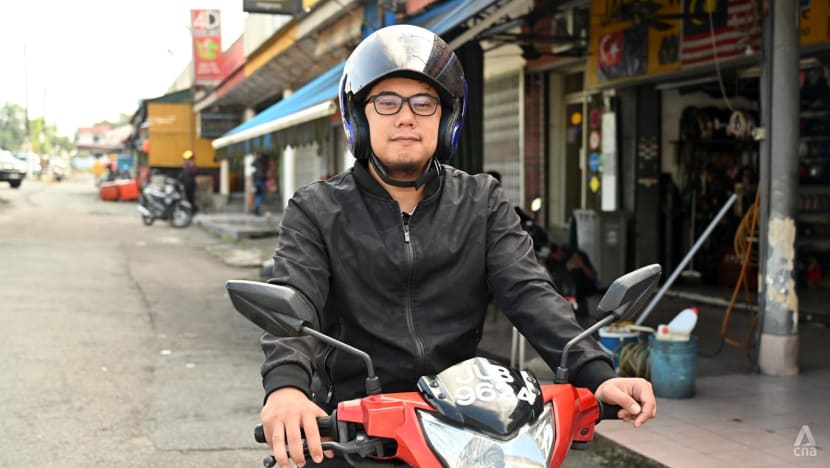
Mr Mohamad Radzi - who is married and has a one-year-old child - told CNA that the Causeway is a means for him to work in his dream job and earn enough to support his family.
“I am proud because I get to see the Johor Causeway reach its 100th birthday, it's a historical monument and a bridge that helps me earn a good living,” said the 31-year-old.
“I cross it almost every morning and evening and at this young age, am able to get married, afford to buy a house and support my family,” he added.
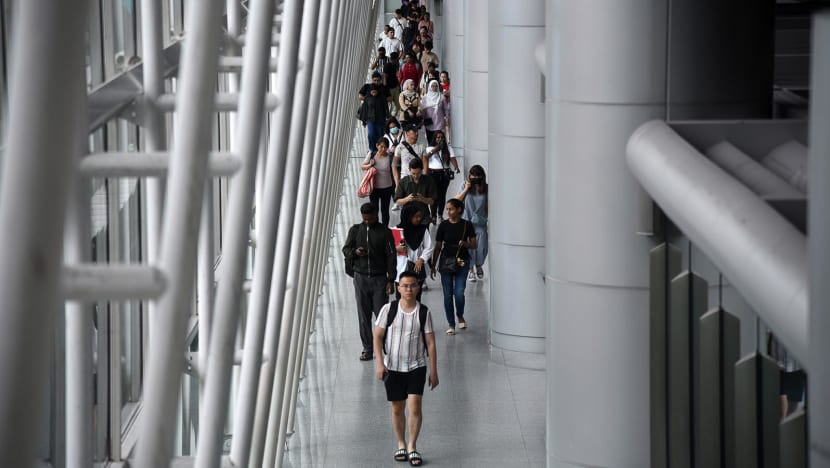
The Causeway has also attracted large volumes of leisure travellers from Singapore, who cross the borders in huge numbers on weekends and public holidays.
Recently during the Hari Raya Haji long weekend, Singapore’s Immigration and Checkpoints Authority reported that 2.4 million people passed through either the Causeway and Tuas Second Link - the two land checkpoints linking Singapore and Johor.
Singaporean retiree Ng Chee Hiong is an example of someone who travels to Johor Bahru regularly for leisure. The 63-year-old told CNA that he travels across via bus around once a week to treat himself.
Mr Ng said that he will usually have breakfast and purchase essential groceries such as coffee, yogurt and cereal.
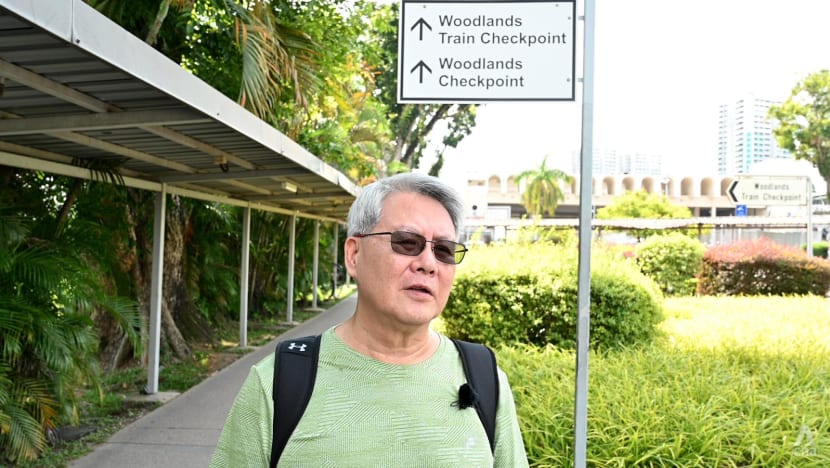
“I go via the Causeway because I live in Sembawang so it's most convenient - it usually takes around an hour to travel each way. I do it just as an outing, to get out of the house,” he added.
While most of his commutes are pleasant because he usually travels during the off-peak periods, Mr Ng acknowledged that there have been instances where he has been stuck in long queues at the immigration halls and along the Causeway itself on the bus.
“I have to be patient, I had to wait in the queue once because I was travelling with my partner and she did not register for e-gate. The journey took us two hours, double the usual time,” he added, referring to Malaysia’s electronic automated gates which Singapore travellers were previously required to register for before passing through.
Congestion has been a perennial issue for the Causeway over the years, as the volume of travellers have increased.

Both Singaporean and Malaysian authorities have made plans to cope with a further increase in volume of commuters to alleviate the gridlock.
For instance, both countries have started to implement QR-code immigration clearance at the Causeway - for drivers passing through Singapore and for Malaysian motorcyclists and bus passengers passing through Johor’s Bangunan Sultan Iskandar (BSI).
Johor’s acting immigration director Mohd Faizal Shamsuddin told CNA in an interview last month that his team has implemented measures in the short term to alleviate the traffic jams.
He said this includes anticipating peak periods to balance manpower deployment as well as improving public communications through the department’s social media channels to disseminate information to travellers on real-time traffic situations as well as major announcements.
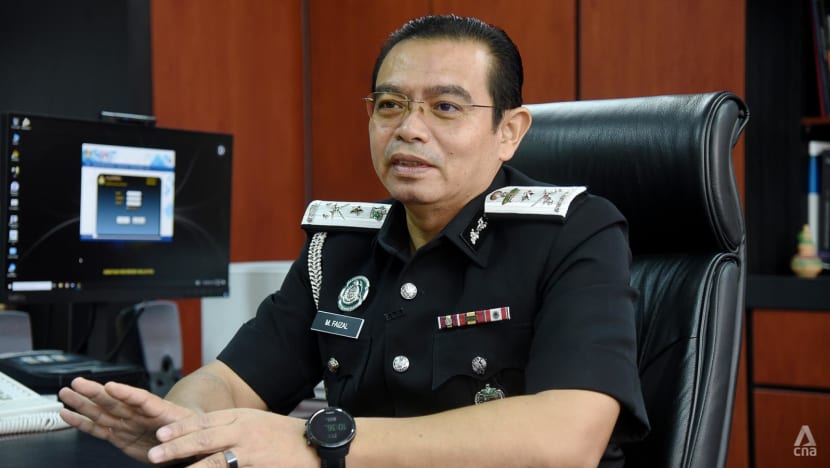
He added that there are also plans to increase the number of motorcycle and car lanes to avoid traffic bottlenecks in BSI.
“Just looking at statistics from January until May 2024, there have been more than 32.3 million trips passing through just BSI … and this goes to show how the Causeway is among the busiests crossing in the world,” said Mr Faisal.
The immigration chief added that even with alternative modes of transport just as the RTS Link set to offer travellers more choices, the Causeway will continue to be popular as it facilitates travellers the convenience of crossing the borders with their own private vehicles.
The RTS Link aims to ease traffic congestion on the Causeway by ferrying up to 10,000 passengers an hour each way on a journey that takes about five minutes.
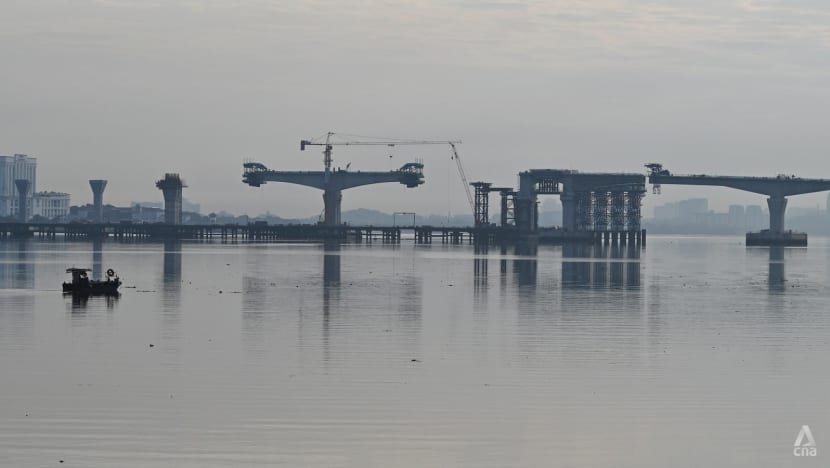
The service will run between the Singapore terminus at Woodlands North station and the Malaysia terminus at Bukit Chagar station in Johor Bahru.
“I believe the Causeway will continue to be relevant as it involves bilateral ties between two countries. And even with other alternatives like the train or buses, Malaysian travellers will continue to travel … by motorcycle because it allows them to travel directly to their offices in Singapore.
“It’s the same with Singaporeans and their families, they would prefer to travel by car because it allows them to travel together as a group to various destinations in Johor Bahru. So for me, the Causeway will continue to be relevant even after the RTS Link is operational from 2027 onwards,” added Mr Faizal.
Commenting on the centennial of the Causeway on Friday, Singapore Prime Minister Lawrence Wong said he looked forward to strengthening the country's links and relationship with Malaysia for the next 100 years.
"Singapore and Malaysia are working on projects in many areas - health, education, culture and trade, and in emerging areas like digital economy and renewable energy.
"Look forward to more win-win projects with Malaysia," he said in a Facebook post.














